How Set Designers Transform Everyday Venues Into Fashion Week Dreamscapes – Latest Fashion Trends & Style Tips October 09, 2025 at 06:15PM
📰 How Set Designers Transform Everyday Venues Into Fashion Week Dreamscapes
✨ Fashion Insights & Trends:
Aside from the collections themselves, several other factors define the tone of a brand's fashion week runway show. There's the soundtrack, which establishes a specific energy for the impending collection. Then there are the models, carefully selected to represent the person a designer envisions wearing their work. But before these elements come into play, there's one piece of the production puzzle that sets the stage, both literally and figuratively: the set design.
When going from show to show throughout fashion week, it's easy for presentations to feel stagnant or blend in one's memory if there's not much differentiating one from another. To prevent this, brands are tasked with creating a fresh atmosphere for attendees to enter — like a sort of palate cleanser between collections.
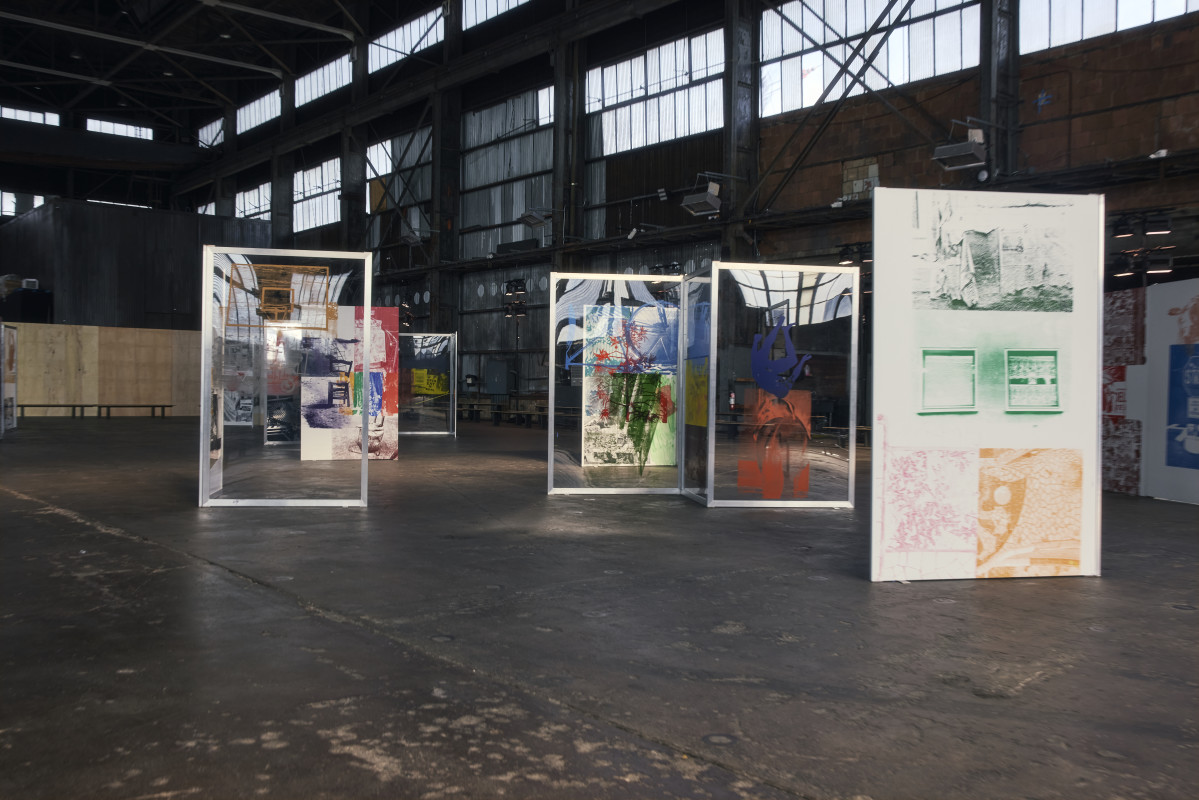
Photo: Courtesy of Dominic Kaffka
When designing a space, Dominic Kaffka, founder of luxury event production agency Focus, says his goal is to establish a completely new world for guests to walk into.
"For this season's Jason Wu show, the first thing is, we knew we wanted to have 500 guests. We also got access to really priceless pieces of art…then we built a physical framework around the art in this huge Brooklyn warehouse," he tells Fashionista. "Next step is finding a lighting designer who can work within all the creative parameters and execute the show in a way that looks great from a guest's perspective."
Building these worlds doesn't come without collaboration. "We always start with the collection inspiration," says Kaffka. But it's not always possible for set designers to see the collection before a build — especially considering how last-minute things can come together during the fast-paced, tense days of fashion week. When it's not possible to see final designs ahead of time, getting to know a clothing designer on a personal level is crucial to delivering a coordinated finished product.
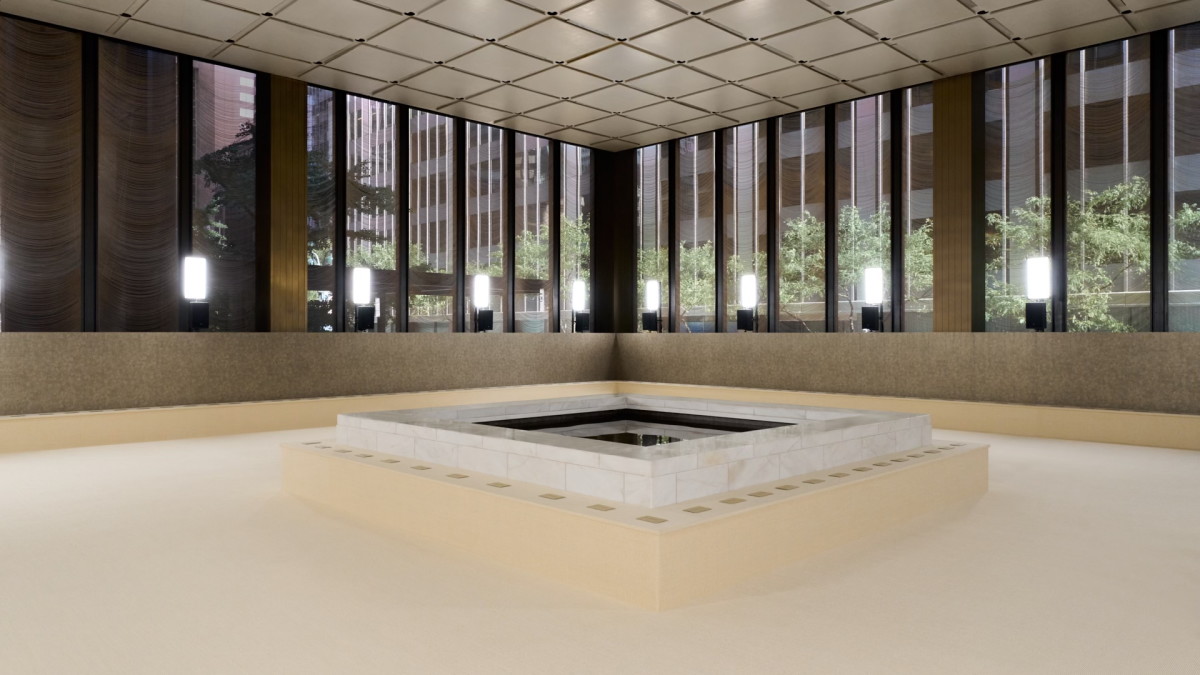
Photo: Courtesy of Dominic Kaffka
"It's always important for me to get in a [clothing designer's] head," says Kat Milne, a New York-based creative director and spatial designer who's worked with the likes of Sandy Liang and Marc Jacobs. "I like to work by understanding what they consume. So if it's films or music or books, things like that help me understand them holistically rather than finding inspiration in images, which are obviously helpful, but I think that it can sometimes put you off track if it's too specific."
Of course, just because a show's backdrop must be instantly emotionally and visually impactful to those who enter the room, that doesn't mean the intention is ever to decenter the actual clothing. Having the chance to either see the collection in advance or align on a moodboard with the designer is key for those designing the space to construct a thoughtful environment that only amplifies the garments, not one that distracts the audience.
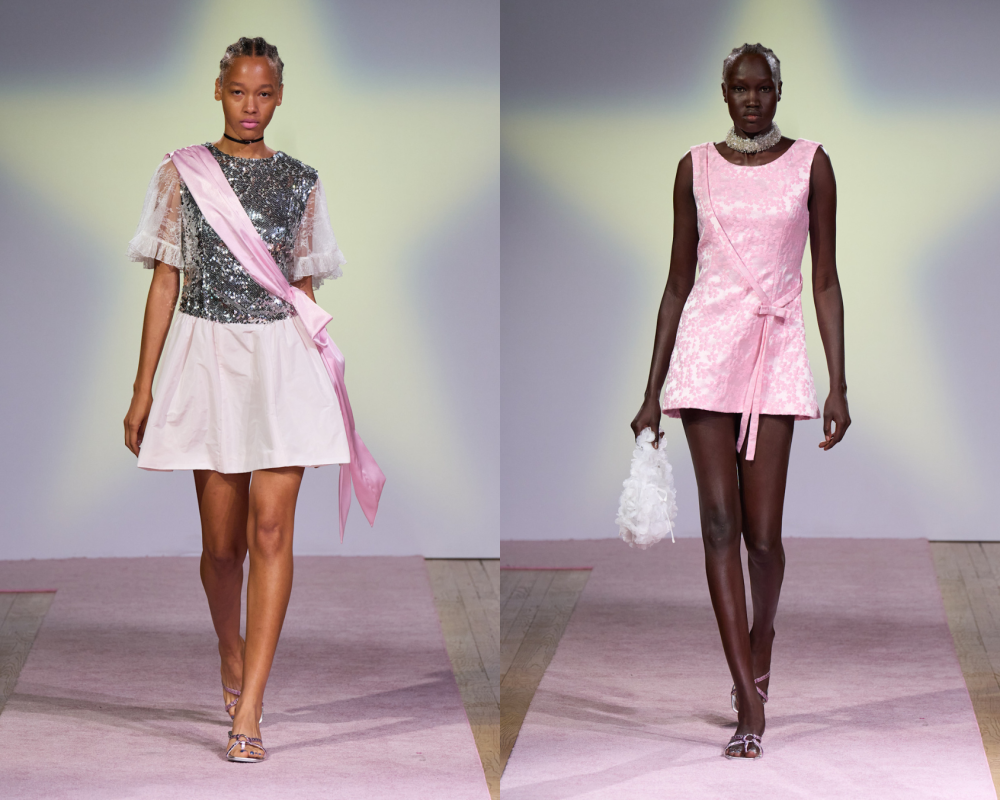
Photos: Launchmetrics Spotlight
"Everything is kind of in service [to the product] and the brand, but I think the set design really helps fill out the gaps," Milne tells Fashionista. "How do you want someone to feel when they first see the clothes? How do you want them to be primed for you? [The set] communicates the story of a brand very quickly and very clearly, and that can then bolster the clothes and really show them in the context they're meant to be seen."
For Sandy Liang's Fall 2024 presentation, Milne built a backdrop that accomplished that exact mission. She decorated the venue with soft butter yellow curtains, pinned up with silver metal bows. Liang's signature bows, representative of girlhood, being created out of such a harsh, steely material delivered a sneak peek of the collection's theme: The Liang customer was growing up — gaining a sharp edge while still maintaining a love for nostalgic elements of childhood. Combining that motif with the relaxed pastel drapes signaled to those present that they were about to witness a maturing of the Sandy Liang girl.
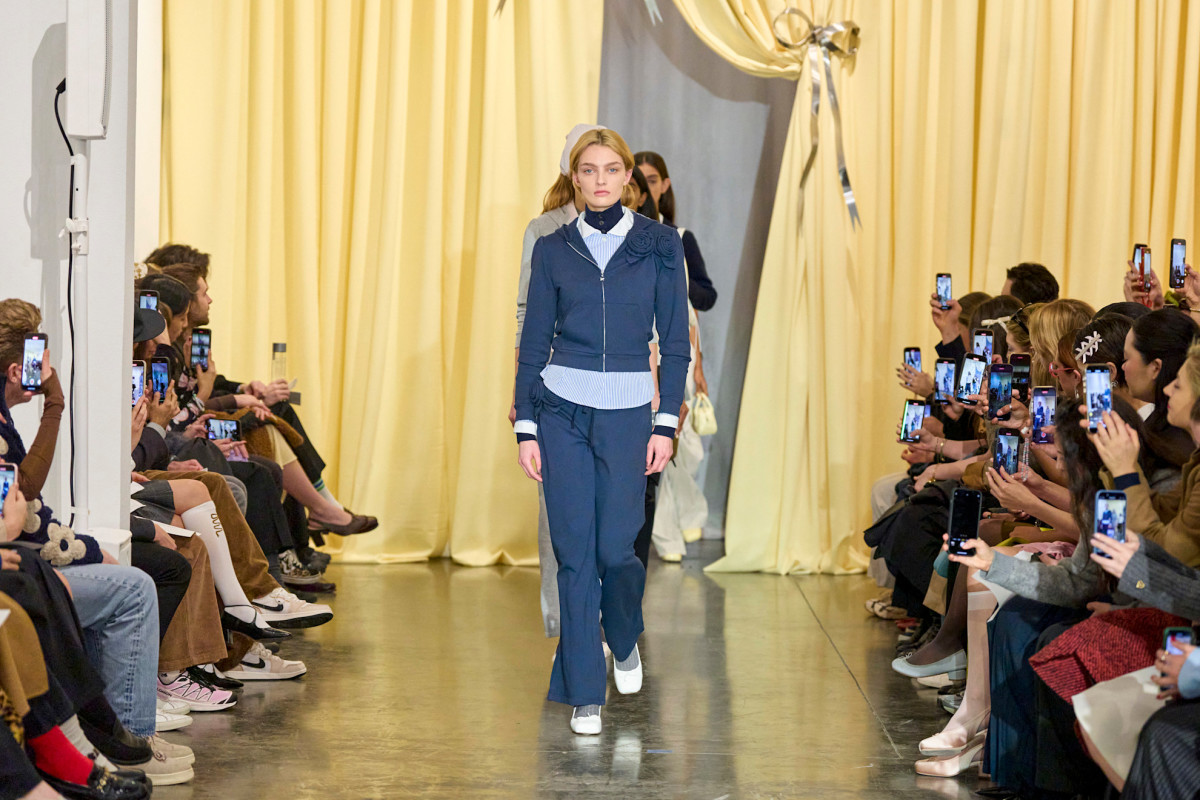
Photo: Launchmetrics Spotlight
"That was the first show we did together… [Liang] has such a clear vision for her brand and for herself," says Milne. "She has such a distinct story that she's telling in each show, but then still leaves you room to play and really bring something to it. It's not overly prescriptive, but it's still very, very clear what she wants, which is actually very rare and the kind of perfect way to be briefed."
No matter how thorough the brief, there isn't always a lot of time to work on the final product. Brett Banakis, a Broadway scenic designer who has worked on Rachel Antonoff's last several presentations, admits to Fashionista, "In my experience, usually there's not enough time." He says he's usually only given two to three months' notice before the event. Banakis also acknowledges that, in the fashion world, brands tend to "run a fairly lean operation." In other words, budgets for these productions aren't always comparable to those of big-scale Broadway shows.
"I truly believe that you can do any show on any budget," Banakis says. "It just has a reflection on what the final product can be."
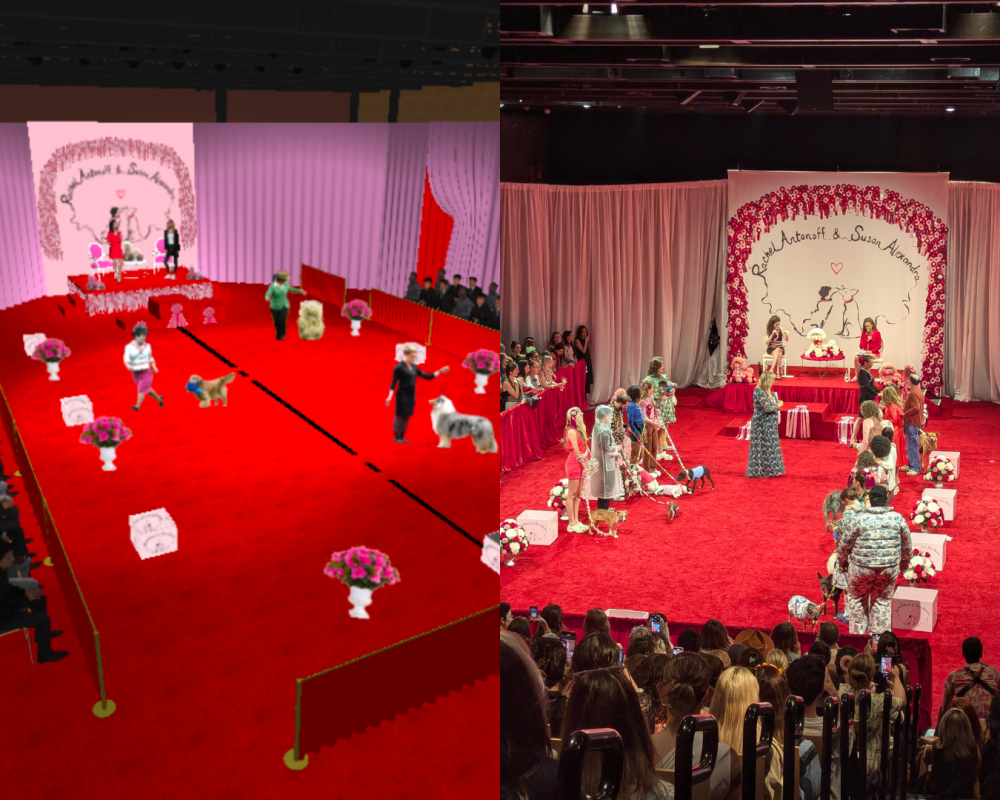
Photos: Courtesy of Brett Banakis
His most recent project with Antonoff was the second-annual "Best in Show" Spring 2026 event done in collaboration with Susan Alexandra, where the two designers cast various celebrity models to walk a dog show-style runway with adoptable rescue pups.
"For this year, because we were kind of repeating a very similar thing to what we did last year, we knew what worked and what we wanted to improve upon," Banakis explains. "So this year, we have a much bigger runway. Once we know the venue, I can build it out and decide, 'The audience will go here, the model pathway is here, here's where we put the graphic, here's where the photographers are going to go.' I just think about all those things that a fashion show needs."
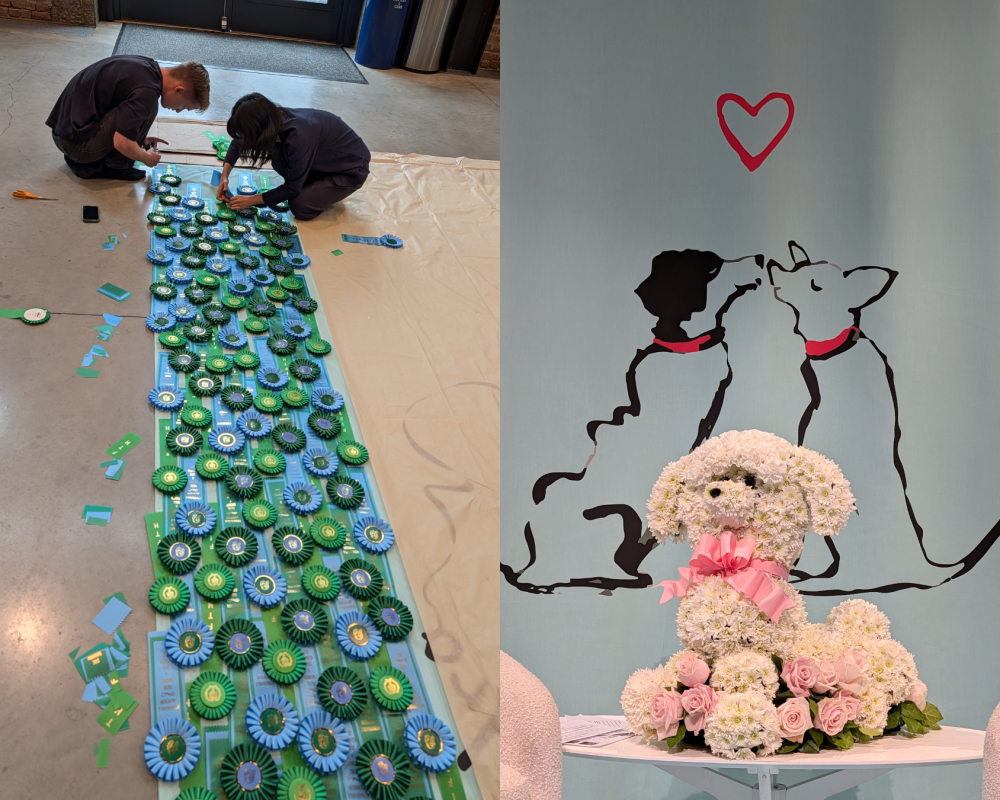
Photos: Courtesy of Brett Banakis
The artistic direction behind set design may be what an audience first notices, but Banakis points out another important part of the process: logistics. Making sure that the flooring is suitable for whatever shoes the brand ultimately decides to put the models in, leaving enough room for the models to turn corners without being cramped and creating an endpoint of the catwalk for consistent photographs are all major components that typically come into play alongside a creative concept (though this isn't always the case).
"There's this interesting point in the design of fashion shows where it switches into heavy logistic mode," says Jeffrey Franklin, co-founder of Playlab Inc., a multidisciplinary creative studio. "You set the vision, and then it becomes, 'How do you make it work with the number of models, how far do they have to walk? How long is that going to be and how do you make sure people don't get in the background of photo shoots?' The fun part is having these problems to solve, but keeping the purity of the story's vision while making it work."
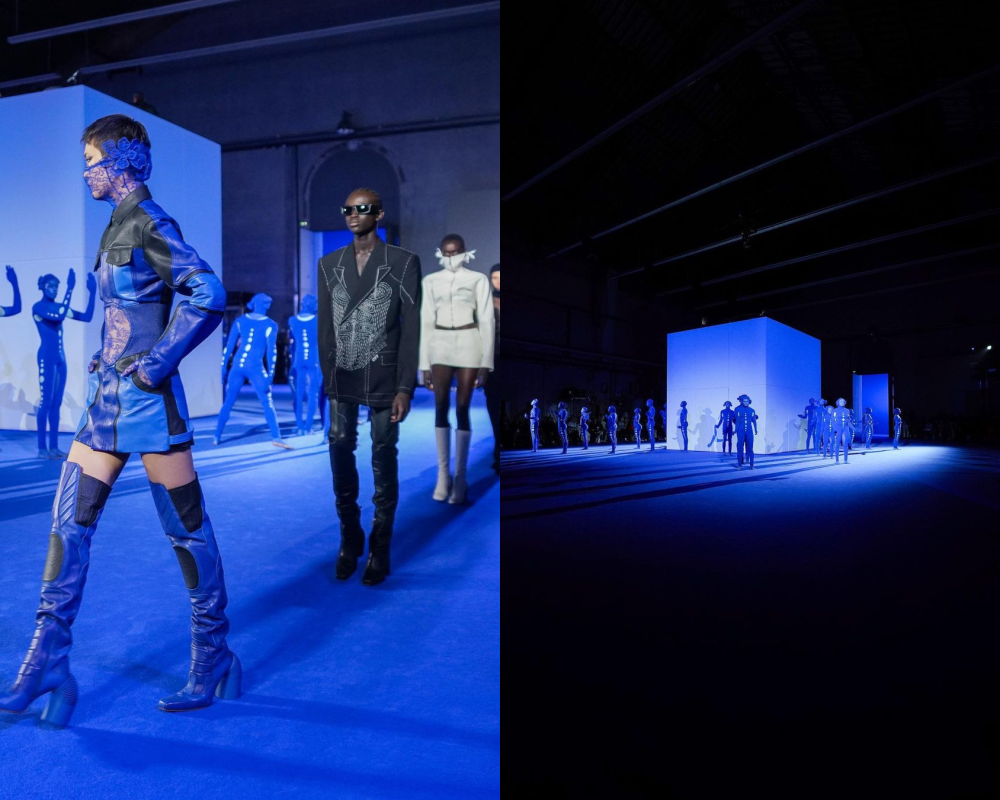
Photos: Courtesy of Playlab Inc.
Franklin and fellow Co-Founder Archie Lee Coates IV developed Playlab Inc. after meeting at architecture school and entering the set design world together post-graduation. "We understood that [set design] was about world-building and proportions and how to create an atmosphere that would carry along the story of the collection," says Franklin.
In 2019, the duo began working with Virgil Abloh on extravagant, high-budget productions for Louis Vuitton's menswear shows. The first included a large LV-monogrammed inflatable bouncy house placed in the center of Paris, along with dozens of custom-made, branded park benches. "We worked with the city to license the drawing of the oldest public bench in Paris, and we made it one and a half times the size of the actual bench so that people's legs would dangle off, like a playful gesture," says Coates.
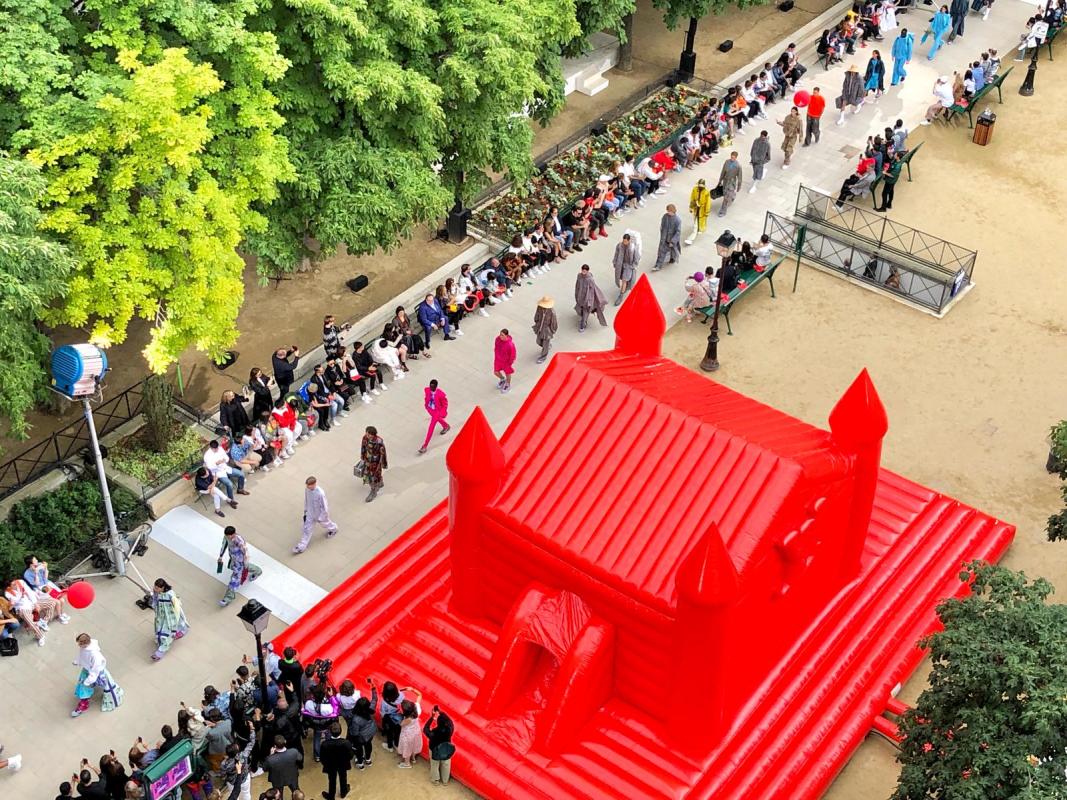
Photo: Courtesy of Playlab Inc.
Those specially-made seats became so popular amongst the show's guests that the brand later sold them to clients. "We take the story of the collection and create things that can stretch into stores and the physical world," explains Franklin. "So, you're further giving the people who weren't at the show the ability to step into that story as well." Coates continues, "[Abloh] pushed for the longevity of those items."
Kaffka has also been specifically tasked with creating pieces that can be repurposed for other brand projects: "Sometimes those original set pieces might be reused in a retail window, or you reuse custom builds for next season in a different look and feel, which makes the whole conversation around building custom sets a little more sustainable and a little more cost-effective."
While custom builds are more common amongst bigger brands like Louis Vuitton and many that Kaffka tend to work with (i.e., Toteme, Proenza Schouler), they're not always the norm with smaller independent labels on a tighter budget.
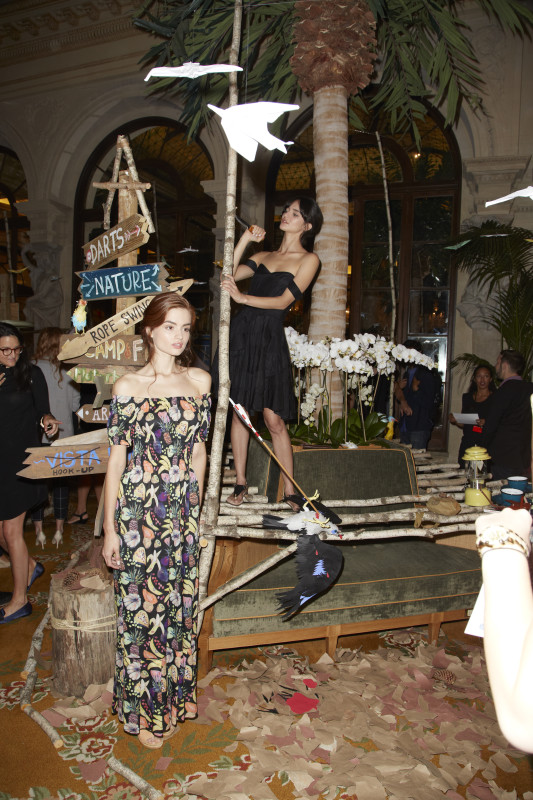
Photo: Courtesy of Rachel Antonoff
"If we can go to a prop stock house or an event company that rents fabric and carpets and do things on this kind of scale, [we do that]," says Banakis. "We're not at the level where we're going to try and build that all from scratch or order custom fabric and carpeting."
However, just because designers are pulling from wholesale warehouses and prop houses doesn't mean the unique quality of the show has to suffer. "There are other things that really sell the individuality, like we had this wonderful woman make these these floral dog sculptures and award ribbons for each seat," says Banakis. "It's nice to have a couple very particular, specific things."
For a smaller-scale show like Liang's, the investment lies in transportable decor like the aforementioned metal bow decals. "It's personally very important to me to try and reuse everything," says Milne. "I don't like to design or build knowing that something is just going to go in the bin after a day. Normally, following the show, there will be market appointments the next day, so often show elements are reused then and again in pop-ups and store windows."
Another major piece of the process is considering social media and virality. With content creators continuing to dominate Fashion Month, these designers are responsible for not only building a set for the clothing to exist in, but also one that has the potential to go viral on the internet.
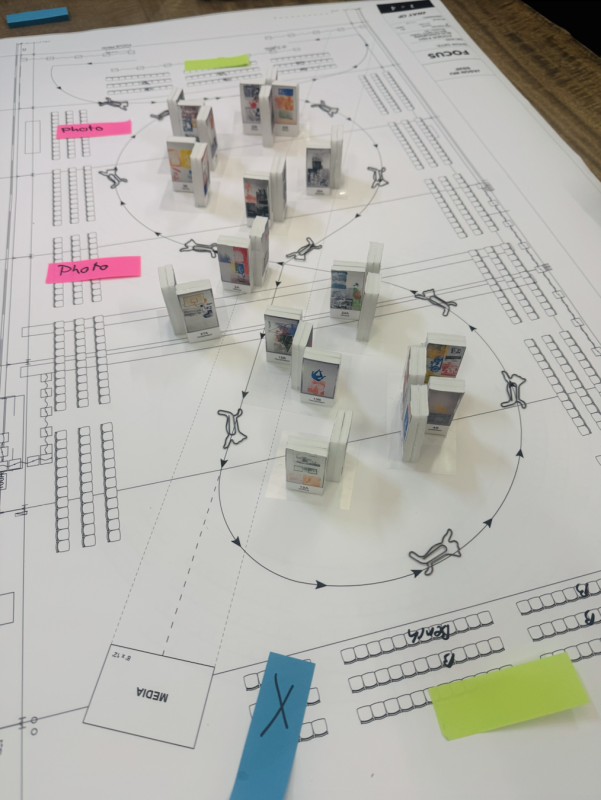
Photo: Courtesy of Dominic Kaffka
"It has to look amazing on phones and the billions of other content that goes out into the world, live," says Kaffka. "At the end of the day, you might have 300 or 500 people posting it on their TikTok and Instagram and you want to make sure it looks great from each seat. What's really important is having a show set that's a 360-degree experience for everyone that looks as neat and conceptual as possible."
"The elephant in the room is that [social media] is always top of mind for everyone. Over the last several years, the landscape has completely changed," adds Coates. Rather try to manufacture a trending image in the development stages, though, he and Franklin believe that if a set is well-made with intention and thoughtfulness to begin with, the fanfare will organically follow.
"If we are creating something that has meaning and truth and is done at a very high level, not just from a conceptual standpoint, but from an executional standpoint, and everyone is doing their jobs, the hope is that it will resonate," Coates says. "It actually makes it a fun sport now, even though it's challenging. Instead of reverse engineering and having a strategic plan of what we want the image to be, we just create something that feels real."
"It has to be real," he emphasizes. "It just has to be real."
📌 Love fashion? Follow us for daily updates on our fashion blog! 🌟
🔹 #FashionTrends #StyleTips #OOTD #How Set Designers Transform Everyday Venues Into Fashion Week Dreamscapes
Comments
Post a Comment